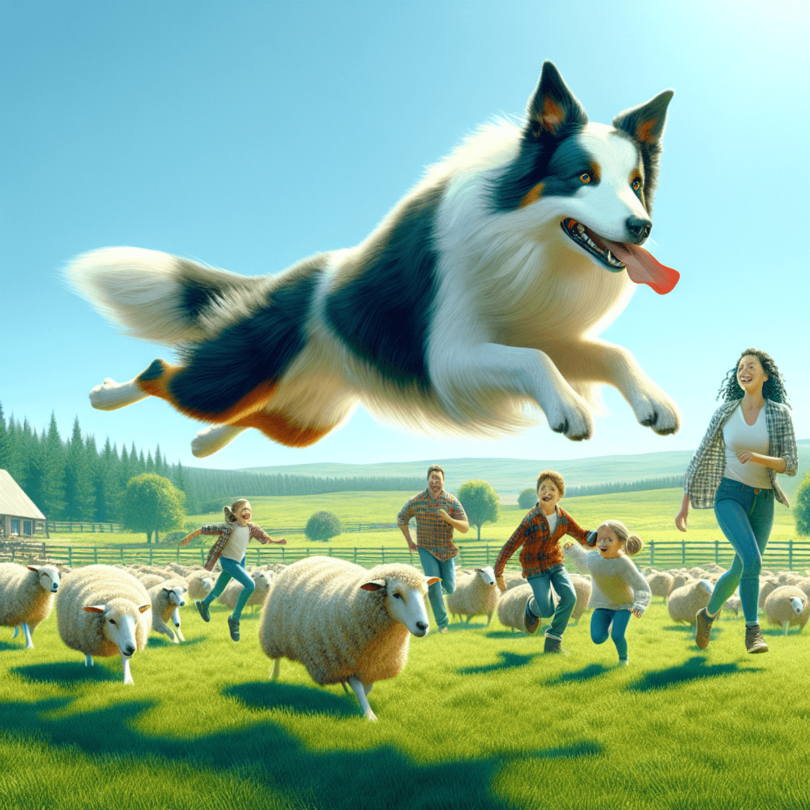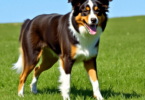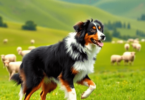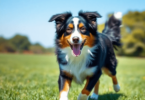Border Collie Origins: Tracing the Legacy of Scotland’s Premier Herding Dog
The Border Collie is a medium-sized dog with a rich history, known for its exceptional herding abilities. These intelligent dogs were specifically bred on the Anglo-Scottish border to expertly handle sheep, displaying incredible agility and an unmatched work ethic.
As both a working dog and a beloved pet, the Border Collie has qualities that set it apart:
- Intelligence: One of the smartest dog breeds.
- Versatility: Excels in herding, competitive sports, and as family pets.
- Loyalty: Forms strong bonds with their human companions.
Learning about the history and origin of Border Collies deepens our appreciation for this extraordinary breed. Their transformation from diligent sheepdogs to treasured family members showcases their heritage and lasting significance in our lives.
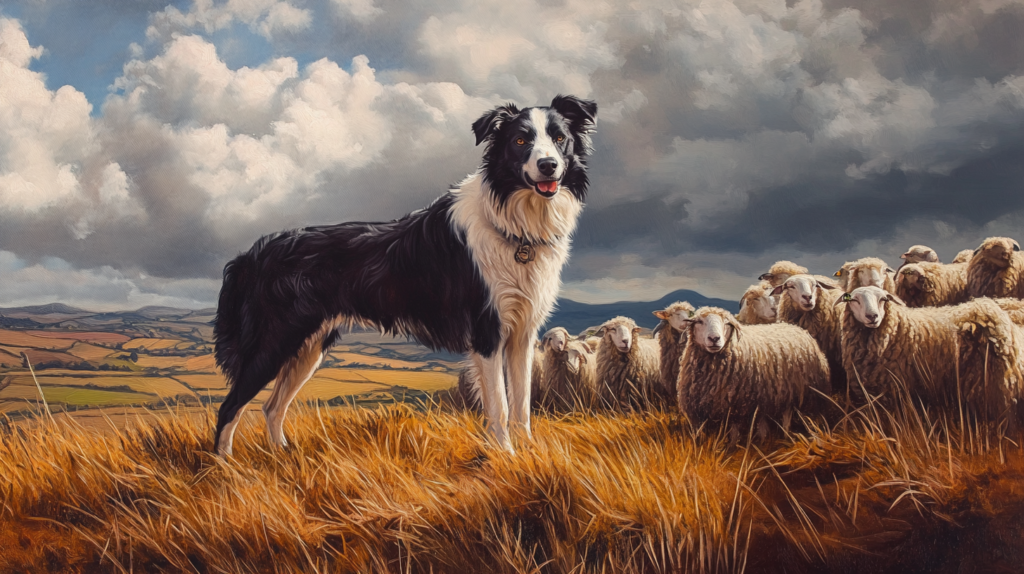
Breed Recognition and Standards
The journey of the Border Collie from a working sheepdog to a recognized breed is fascinating. It showcases the blend of tradition, performance, and evolving standards.
Early Recognition
The term “Border Collie” was first coined by the International Sheep Dog Society (ISDS) in 1915. This distinction aimed to differentiate these agile herders from their more ornamental show ring counterparts.
Breed Standards
Breed standards focus on both physical and behavioral traits. Key characteristics include:
- Size: Medium-sized, typically weighing between 12 to 25 kg (26 to 55 lb).
- Height: Stands around 46 to 60 cm (18 to 24 in) at the shoulder.
- Coat: Available in smooth or rough textures, with a variety of colors.
Working Ability
The emphasis on intelligence, agility, and strong herding instincts remains paramount. Breeders strive to maintain these essential qualities while also considering aesthetics.
Recognition by Organizations
The American Kennel Club (AKC) formally recognized the Border Collie in 1995 after it had spent several decades in the Miscellaneous class. This acknowledgment reflects the breed’s popularity and versatility beyond herding tasks.
With such rich recognition history, the Border Collie stands as a symbol of excellence among working dogs and companions alike.

1. The Origins of the Border Collie
The history of the Border Collie is closely connected to the geography and culture of the Anglo-Scottish border. This rugged area, with its rolling hills and green pastures, was ideal for sheep farming. As farming methods changed, there was also a growing need for skilled working dogs who could handle flocks in difficult landscapes.
Ancient Influences
Several ancient breeds played a role in shaping the Border Collie:
- Roman Drover Dogs: These early dogs were brought to Britain by Roman armies and served as guardians and herders for livestock. Their strong nature laid the foundation for future sheepdogs.
- Viking-era Dogs: After the Romans, Viking settlers introduced their own breeds, further improving herding abilities through crossbreeding with local dogs.
Over hundreds of years, these influences came together to create a line of traditional sheepdogs that eventually led to what we now know as the Border Collie.
Early Sheepdog Breeds
In Scotland and England, various early sheepdog breeds developed, each suited to their specific surroundings:
- Working Sheepdogs: These dogs were agile and intelligent, showing remarkable herding instincts. Farmers trained them to follow commands and guide flocks with precision.
- Farmers’ Dogs: Farmers played a crucial role in shaping these breeds through selective breeding practices. By prioritizing traits like agility, intelligence, and a strong work ethic, they produced dogs capable of handling complex herding tasks.
Functionality was prioritized over appearance; these dogs were valued for their ability to work tirelessly alongside human partners in any weather.
Selective Breeding Practices
As the demand for skilled herding dogs grew in the late 19th century, breeders started formalizing their efforts:
- Farmers focused on breeding dogs with exceptional working abilities.
- These breeding practices emphasized not just physical traits but also temperament—ensuring that only those with a deep instinct for herding were chosen for future generations.
This careful selection process resulted in a breed that embodied intelligence and athleticism—the defining qualities of Border Collies today.
The journey from ancient drover dogs to modern companions shows how closely connected this breed is to agricultural history while highlighting its important role in today’s working environments. Each generation continues to evolve, deepening our understanding and appreciation of these extraordinary canines.
2. Historical Roles and Purposes
The Border Collie’s history is steeped in practical roles, primarily focused on herding sheep across the rugged terrain of the Anglo-Scottish border. These remarkable canines were not just pets; they were indispensable partners to farmers and shepherds, embodying traits that made them exceptional working dogs.
Herding Skills
Border Collies developed an innate ability to gather, drive, and control livestock. Their keen intelligence allowed them to interpret commands and respond swiftly to the needs of their handlers.
Versatility
Beyond sheep herding, these dogs adapted to various tasks, such as:
- Guarding livestock from predators
- Assisting in cattle management
- Participating in farm chores
Communication
Unique vocalizations and body language established a bond between shepherds and their dogs. A well-trained Border Collie could be directed through subtle gestures or whistles, showcasing a level of teamwork that was both efficient and harmonious.
Through the years, their reputation grew as diligent workers capable of tackling challenging terrains while maintaining a friendly disposition. This versatility laid the groundwork for their transition into beloved family pets—eager companions with an unquenchable zest for life.
3. Key Figures in Border Collie History
The fascinating story of the Border Collie cannot be told without shining a spotlight on its key figures, particularly Old Hemp, the legendary dog who became the foundation sire of modern Border Collies. Born in 1893 in Northumberland, England, Old Hemp was no ordinary sheepdog; he was a canine prodigy. His remarkable herding abilities and intelligence set him apart from other dogs of his time.
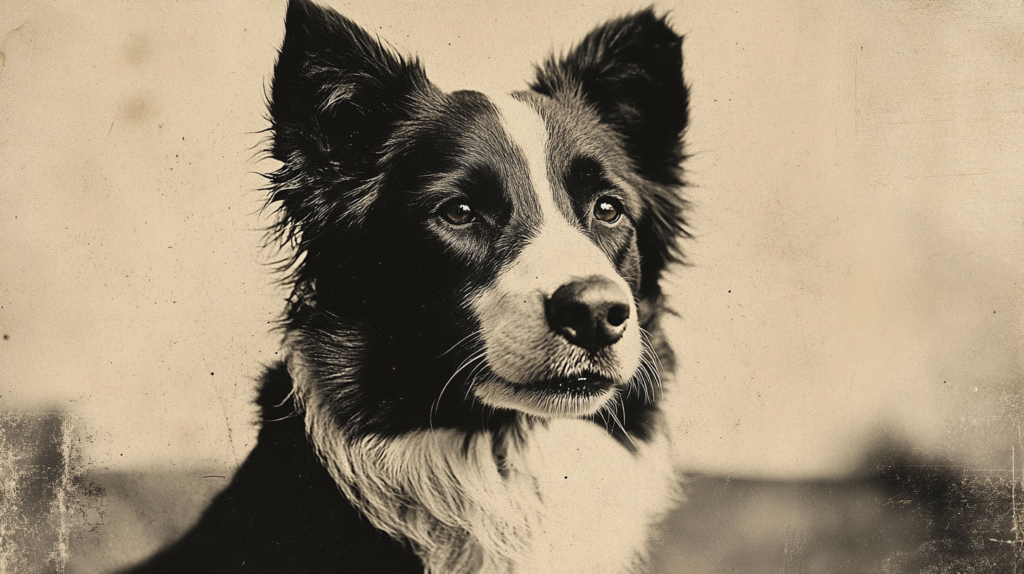
Old Hemp: The Foundation Sire
- Herding Genius: Known for his exceptional talent in herding sheep, Old Hemp displayed unique skills that were admired by farmers throughout the region. He had an innate ability to control livestock with minimal commands, showcasing an understanding of the animals that was almost human-like.
- Genetic Legacy: Through selective breeding practices, many breeders recognized the value of Old Hemp’s traits. His influence permeated through generations of Border Collies, with countless descendants tracing their lineage back to him. This established him as a cornerstone in the breed’s development.
- Recognition: In 1915, the term “Border Collie” was coined by the International Sheep Dog Society (ISDS) to differentiate these working dogs from show-ring collies. Old Hemp’s legacy helped solidify this distinction and contributed to the breed’s growing reputation.
Influential Figures in Early Development
Alongside Old Hemp, other notable figures played crucial roles in shaping the Border Collie’s reputation:
- James Hogg: Often referred to as “The Ettrick Shepherd,” Hogg was not just a shepherd but also a celebrated poet and novelist who contributed to the cultural significance of sheepdogs in Scotland. His writings often featured descriptions of skilled sheepdogs, helping elevate their status among farmers and enthusiasts alike.
- Thomas Bewick: An influential engraver and naturalist, Bewick’s works captured the essence of rural life and its connection with animals. His illustrations and writings on working dogs brought attention to their importance in agriculture and society. Through his art, he helped popularize the image of sheepdogs like those that would eventually evolve into Border Collies.
These figures not only impacted how we view Border Collies today but also laid down foundational principles for breeding practices that emphasized intelligence and work ethic. The melding of their contributions created a strong framework for what would become one of the most beloved breeds worldwide.
As this rich history unfolds, it serves as a reminder of how interwoven these key individuals are with the development and recognition of the Border Collie breed—a breed that continues to thrive as both reliable workers and affectionate companions.
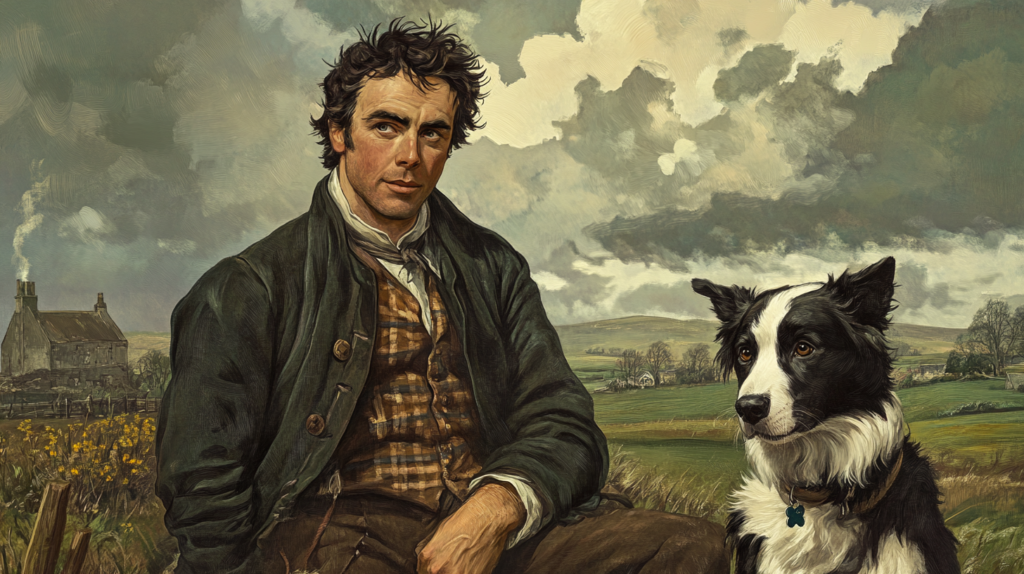
4. The Evolution of the Breed Through Selective Breeding Practices
The Border Collie’s journey is a testament to the art of selective breeding. This careful practice ensured that these remarkable dogs not only excelled in herding tasks but also developed traits that made them exceptional companions.
Key methods employed by breeders include:
- Planned Matings: Breeders meticulously paired dogs with desirable traits, such as intelligence, agility, and strong herding instincts. These intentional pairings aimed to enhance specific characteristics essential for working on farms.
- Indiscriminate Matings: In contrast, some breeders engaged in less selective practices, which occasionally led to a mix of traits not conducive to herding or companionship. This approach highlighted the importance of focused breeding strategies.
The balance between work ethic and companion qualities became increasingly important as Border Collies transitioned from dedicated sheepdogs to beloved family pets. Breeders recognized that while these dogs needed to maintain their herding prowess, they also required adaptability and sociability for life outside the pasture.
As a result, Border Collies emerged as versatile canines capable of performing complex tasks while providing joy and companionship in homes around the world. Their evolution showcases a partnership between humans and dogs, deeply rooted in both practicality and affection.
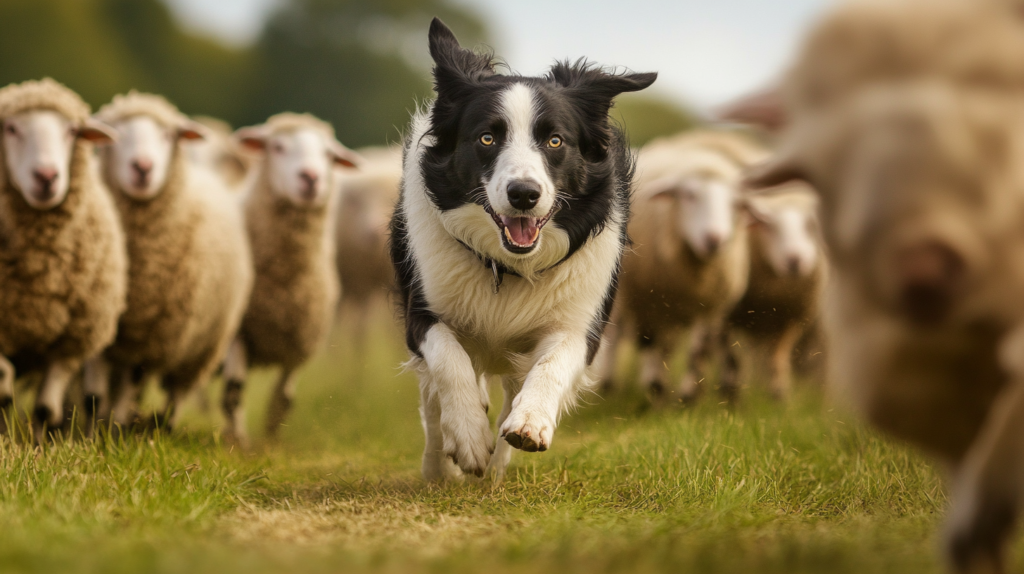
5. Cultural Significance and Recognition in Sheepdog Trials and Beyond
The rise of Border Collies as extraordinary herding dogs coincided with the establishment of sheepdog trials, a competitive sport that showcases their remarkable skills. These events originated in the late 19th century in the UK, driven by farmers who sought to demonstrate the capabilities of their prized working dogs.
The Evolution of Sheepdog Trials
- First Trials: The inaugural sheepdog trial took place in 1876 at Bala, Wales. This event drew attention to the intelligence and agility of herding dogs.
- Growing Popularity: As trials gained traction, they spread beyond regional gatherings into national competitions. The International Sheep Dog Society (ISDS) was founded in 1906 to oversee these events and maintain breed standards.
- Modern Competitions: Today, sheepdog trials have evolved further, incorporating various formats such as international championships, where Border Collies compete against each other in complex herding tasks.
Recognition of Border Collies by formal organizations marked a significant milestone for the breed.
American Kennel Club (AKC) Recognition Timeline
- 1955: Border Collies were listed in the AKC’s Miscellaneous class, acknowledging their unique qualities.
- 1995: Officially recognized as a distinct breed by the AKC, this designation highlighted the importance of maintaining both working abilities and companionship traits.
Cultural Impact
The influence of Border Collies extends beyond farms and trials. Their keen intelligence and agility have captured hearts globally, making them popular in various canine sports such as agility competitions and obedience training. Their versatility is celebrated not just for herding but also for being family companions.
In essence, the history of sheepdog trials and subsequent recognition by organizations like the AKC underscores the evolution of Border Collies from working dogs to esteemed competitors and beloved family members. Their journey reflects a deep-rooted connection with human culture, showcasing their unique ability to adapt while retaining their remarkable herding instincts.
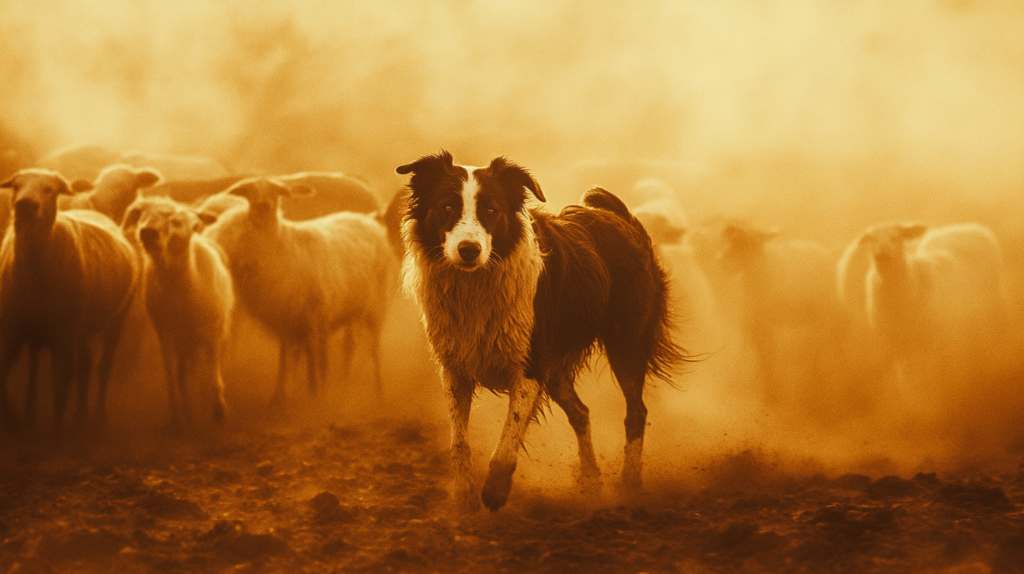
6. The Lasting Legacy: Famous Border Collies Throughout History
Throughout history, several famous Border Collies have made significant contributions that shaped not only their breed but also popular culture and farming practices. These remarkable dogs left paw prints on the hearts of many.
Here are some of the most notable Border Collies in history:
- Old Hemp: Born in 1893, he is often celebrated as the foundation sire of the modern Border Collie. His exceptional herding abilities set a high standard for future generations, influencing breeding practices across the globe.
- Fly: This talented female Border Collie gained fame after starring in the film Babe (1995), showcasing her intelligence and versatility, which captivated audiences worldwide.
- Chaser: Known as the “smartest dog in the world,” Chaser demonstrated an incredible ability to recognize over 1,000 words. Her work with Dr. John Pilley highlighted the breed’s cognitive capabilities and strengthened its reputation as one of the most intelligent dog breeds.
These iconic figures exemplify how Border Collies have transcended their working origins, becoming cherished companions while leaving an indelible mark on society.
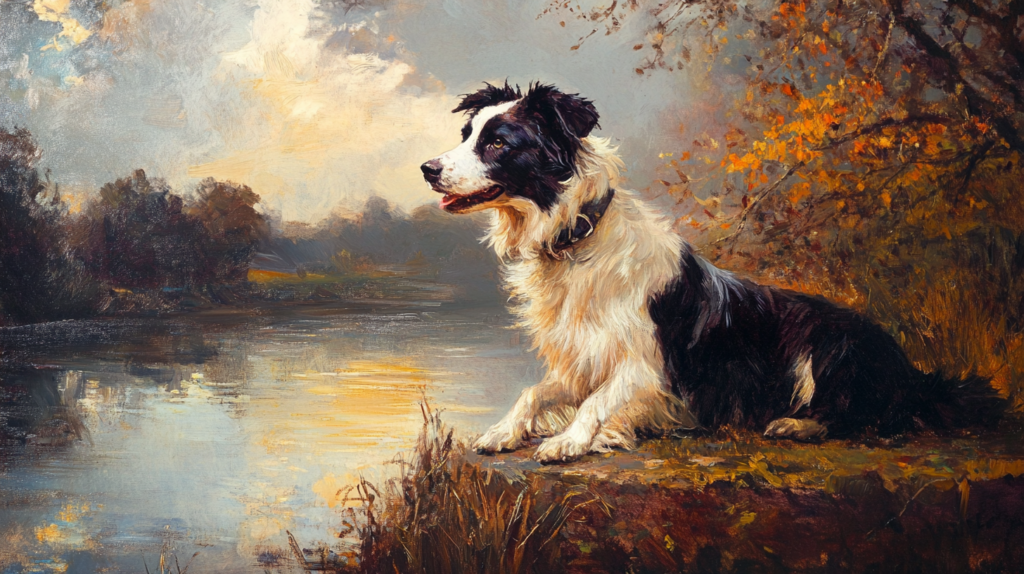
7. Development of the Modern Border Collie
The journey of the Border Collie into modern times is a fascinating tale of adaptation and growth. As the breed gained popularity beyond the fields of Scotland, breeders began to focus on enhancing specific traits that appealed to both working environments and family homes.
1. Selective Breeding
Breeders emphasized intelligence, agility, and a strong work ethic. This led to dogs that not only excelled in herding but also became stars in agility competitions and obedience trials.
2. Diverse Roles
The modern Border Collie showcases versatility. While still cherished for their herding abilities, they now thrive in various activities such as:
- Search and rescue
- Therapy dogs
- Competitive sports
3. Physical Characteristics
The breed’s appearance diversified, with smooth and rough-coated varieties emerging. Colors range widely, showcasing striking patterns that capture the eye.
4. Recognition
Official recognition from organizations like the American Kennel Club (AKC) solidified their status as a distinct breed, paving the way for specialized breeding programs focused on maintaining core working traits alongside conformation characteristics.
As Border Collies continue to evolve, their legacy as both diligent workers and affectionate companions remains firmly rooted in history. Their adaptability ensures they will be cherished in various roles for generations to come.
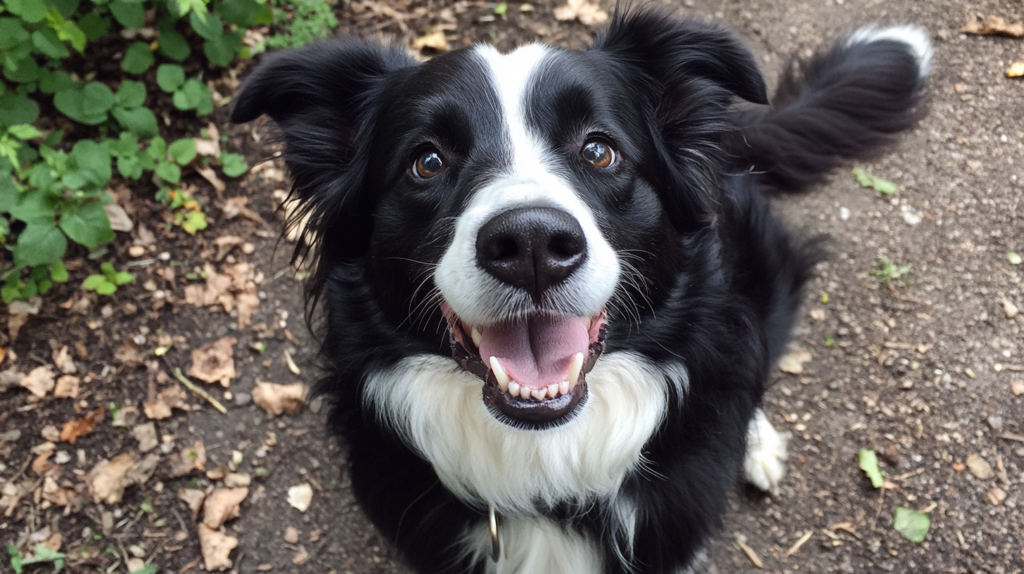
The Journey of Border Collies: From Working Dogs to Cherished Family Pets
The story of how Border Collies went from being herding dogs on the Anglo-Scottish border to beloved pets in our homes is truly amazing.
Once known for their herding skills, these incredible dogs have become loyal companions. Their intelligence and agility make them not only great workers but also cherished family members.
As versatile companions, Border Collies bring joy and energy to our lives every day. This mix of history and love makes us appreciate them even more as hardworking helpers and adored pets. Learning about Border Collie history and origin strengthens our connection with these amazing dogs today.
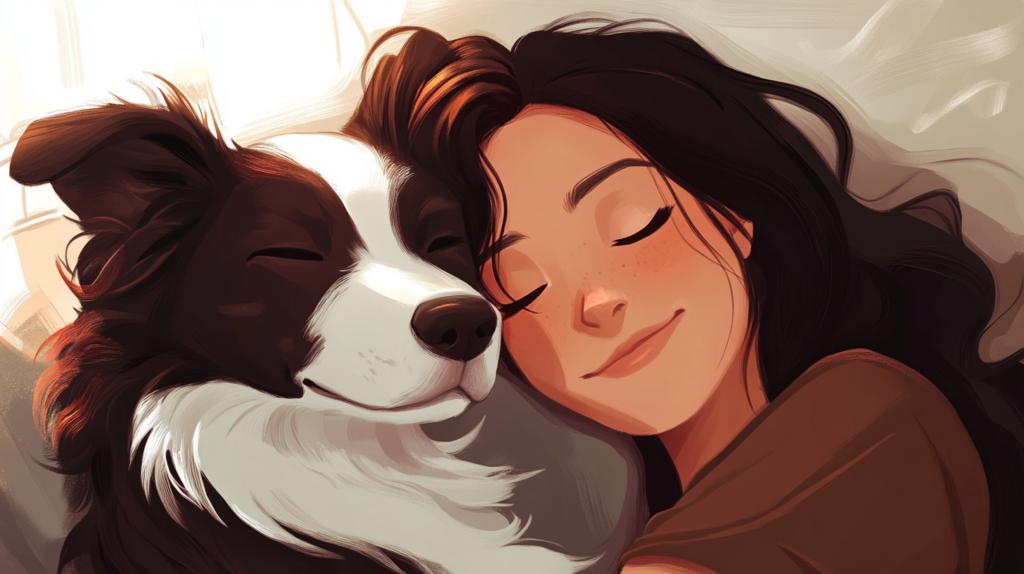
FAQs (Frequently Asked Questions)
What is the origin of the Border Collie?
The Border Collie originated from the Anglo-Scottish border, where ancient breeds, including Roman drover dogs and Viking-era dogs, were developed into traditional sheepdogs. Farmers played a crucial role in shaping these dogs through selective breeding practices to enhance their herding abilities.
Who was Old Hemp and why is he significant to the Border Collie breed?
Old Hemp is recognized as the foundation sire of modern Border Collies. His breeding and characteristics had a profound impact on the development of the breed, influencing subsequent generations and establishing a standard for herding excellence.
How have selective breeding practices influenced the evolution of the Border Collie?
Selective breeding practices have been employed to enhance specific traits necessary for herding tasks. Breeders aimed to balance work ethic with companionship qualities, leading to the versatile nature of today’s Border Collies as both diligent workers and loving family pets.
What is the significance of sheepdog trials in relation to Border Collies?
Sheepdog trials have evolved into a competitive sport that showcases the herding skills of Border Collies. The establishment of these trials has contributed to the breed’s recognition, including acknowledgment by organizations such as the American Kennel Club (AKC).
Can you name some famous Border Collies throughout history?
Several renowned Border Collies have made significant contributions to both popular culture and farming practices. Their achievements highlight the breed’s exceptional abilities and enduring legacy as remarkable working dogs.
How has the perception of Border Collies changed over time?
Initially valued primarily for their herding skills, Border Collies are now embraced for their multifaceted nature. They are recognized not only as hardworking companions but also as cherished family members who bring joy into our lives every day.
